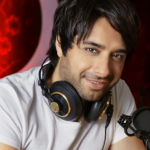Silence Broken
Reporters surrounded Ottawa Senators coach Cory Clouston after his team’s 2-0 win over the Boston Bruins last Saturday. Rather than a soundbite, Clouston told reporters the team’s assistant coach, Luke Richardson, lost his daughter to suicide the night before. Silence crushed the room, but it didn’t last. The local papers, the Ottawa Citizen and the Ottawa Sun, covered it heavily. That was expected since Richardson is legend in Ottawa, where he grew up, played Junior B with the Ottawa West Golden Knights before playing 21 years in the NHL. To their credit, the Richardson family opened up to the media in order to discuss the problem of suicide. On Wednesday, The Globe and Mail printed an article about the public memorial service for Daron Richardson, who hung herself last Friday, on the front page. Front-page suicide coverage is unheard of in Canada. Then Thursday, The Globe‘s Zosia Bielski wrote an article about the lack of suicide coverage.
These articles focused on the devastation suicide wreaks, and the consequences of ignoring it. That’s the media’s fault. Journalists have long bowed to psychiatrists’s rhetoric about the contagion effect, which says more suicides will occur after sensational media coverage. Some articles suggested it’s now time to cover suicide, and others talk about the risks associated with an open discussion. News organizations have long avoided suicide unless it happens to a public figure, in a public place or is a murder-suicide. Richardson’s daughter falls into the public figure category, making it a no-brainer as a news story. But why hasn’t the media challenged this long-held idea of avoidance? It’s a huge problem in this country—3611 people killed themselves in 2007, the latest year for national data.
Our cover story in the upcoming Ryerson Review of Journalism, which launches on December 14, challenges journalists to report suicides. Our six-month investigation included nearly 80 interviews where we demanded some of Canada’s leading psychiatrists explain the copycat effect in the digital age of 24-hour news, Facebook and Twitter. Do old scientific studies hold true today? Journalists from across the country, family members of suicide victims and the police also weigh in on the controversial subject. The results are surprising.














